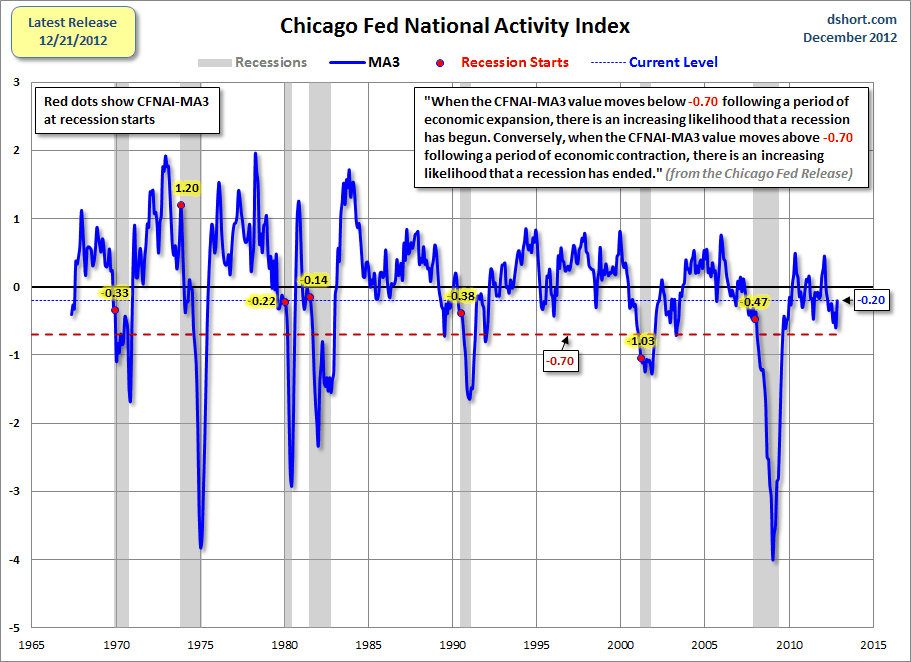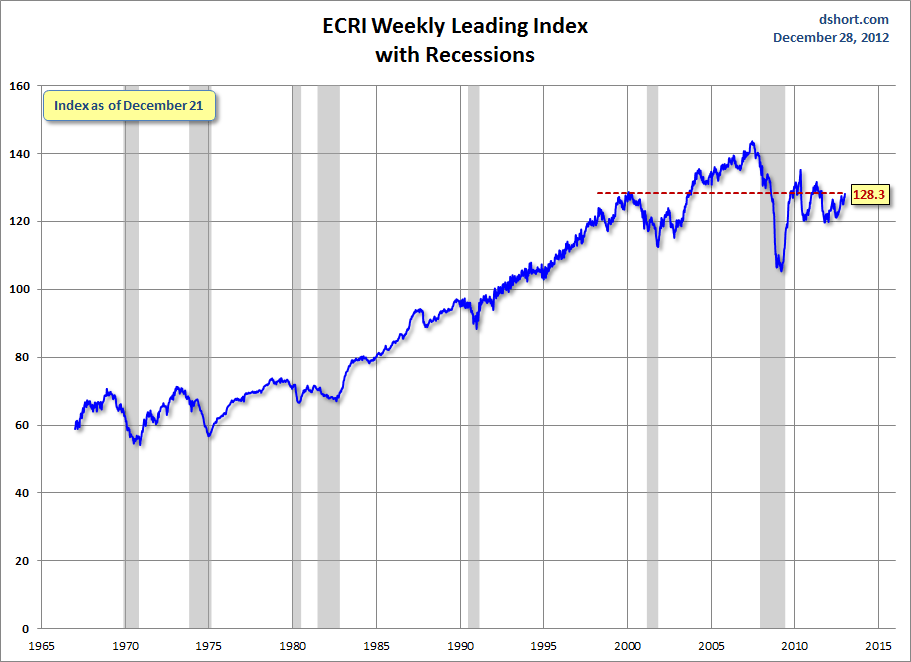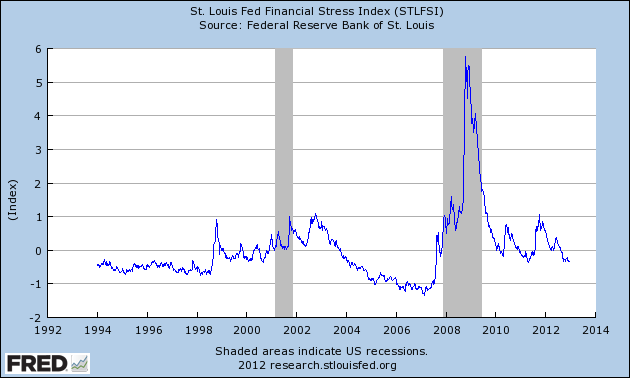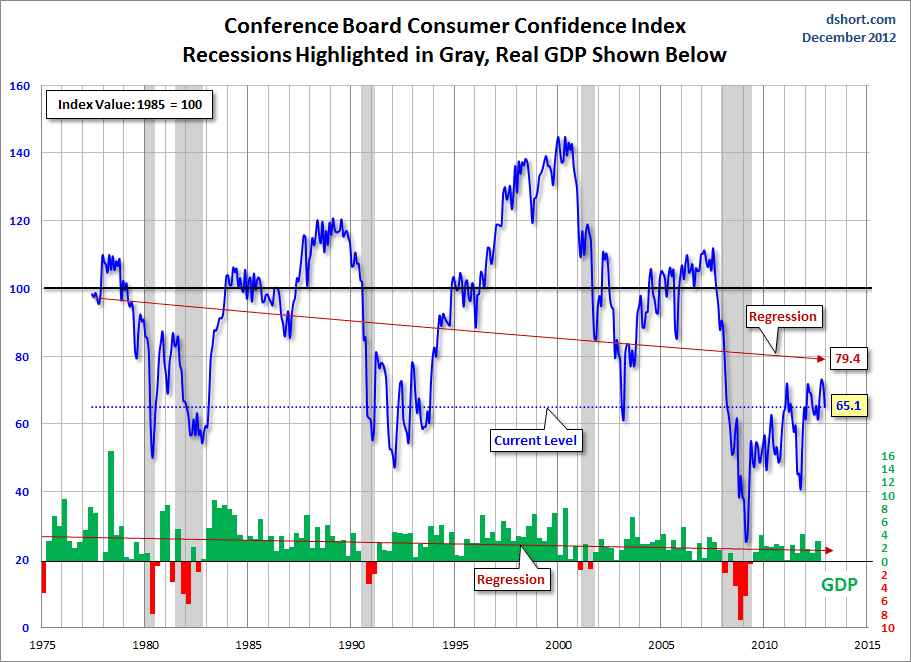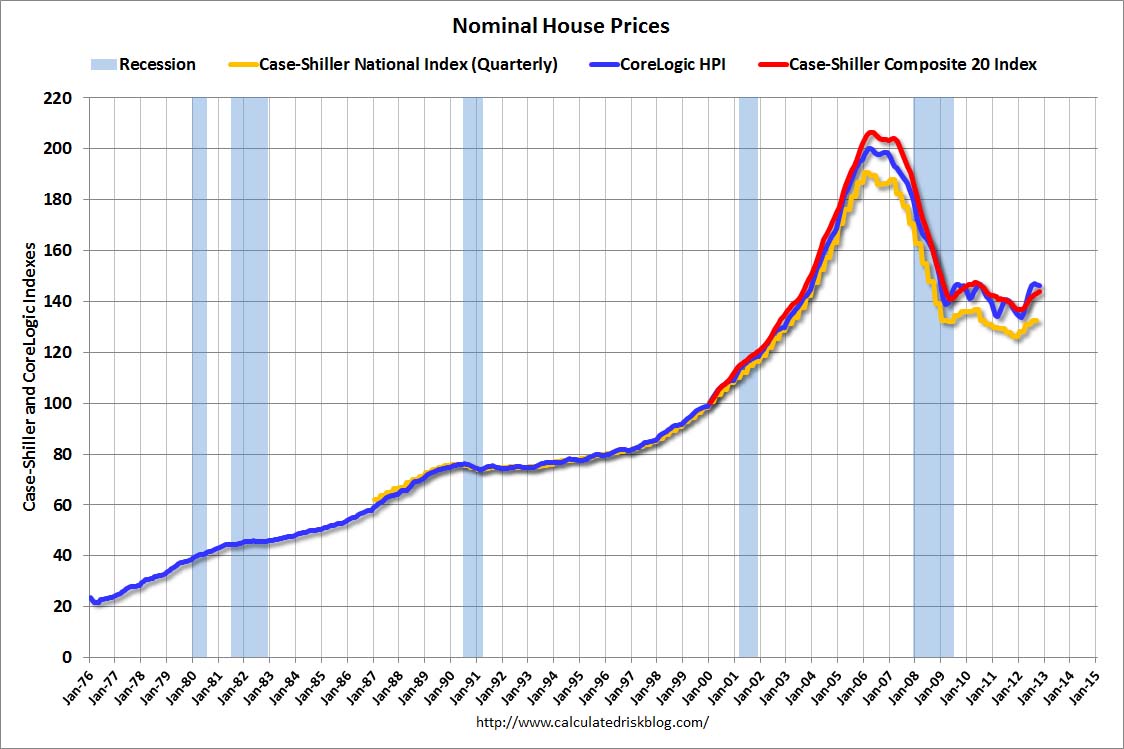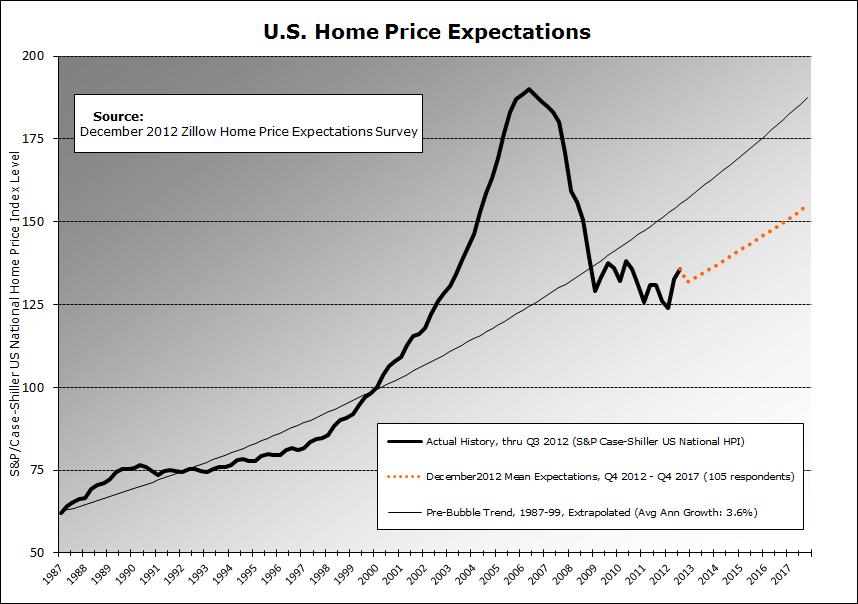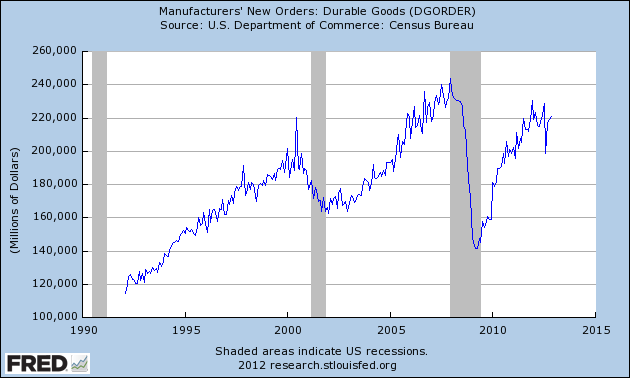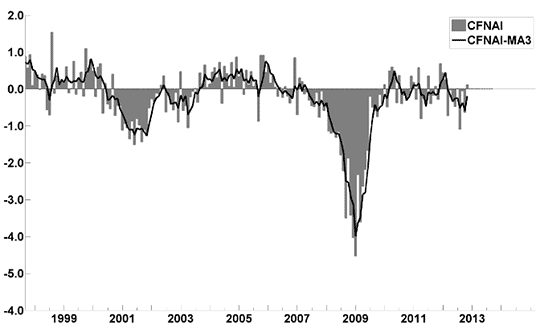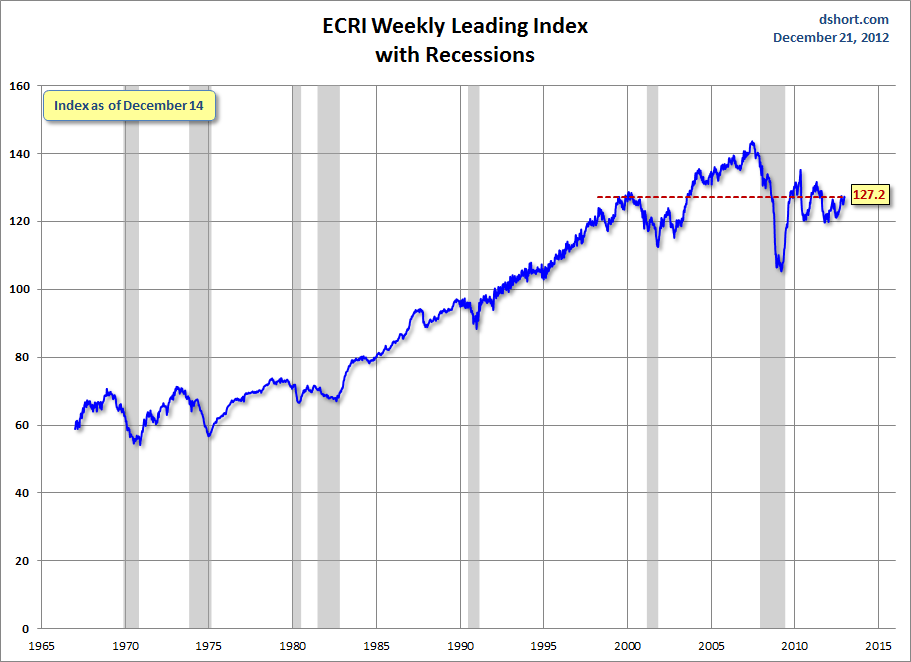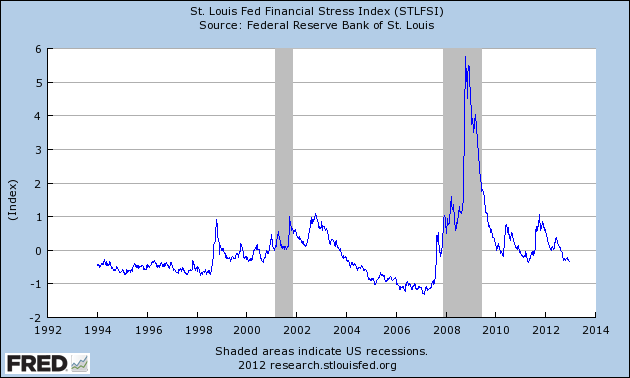The Chicago Fed National Activity Index (CFNAI) and the Aruoba-Diebold-Scotti Business Conditions Index (ADS Index) are two broad-based economic indicators that I regularly feature in this site.
The current levels of each are notable, as they are flagging from a short-term perspective and their long-term trends continue to sink.
Doug Short, in his blog post of December 27, titled “The Philly Fed Business Conditions Index” displays both the CFNAI MA-3 (3 month Moving Average) and ADS Index (91-Day Moving Average) from a couple of perspectives.
Of particular note, two of the charts, shown below, denote where the current levels of each reading is relative to the beginning of past recessionary periods, as depicted by the red dots.
The CFNAI MA-3:
(click on charts to enlarge images)
-
The ADS Index, 91-Day MA:
-
Also shown in the Doug Short’s aforementioned post is a chart of each with a long-term trendline (linear regression.)
_________
I post various indicators and indices because I believe they should be carefully monitored. However, as those familiar with this blog are aware, I do not necessarily agree with what they depict or imply.
_____
The Special Note summarizes my overall thoughts about our economic situation
SPX at 1402.43 as this post is written
